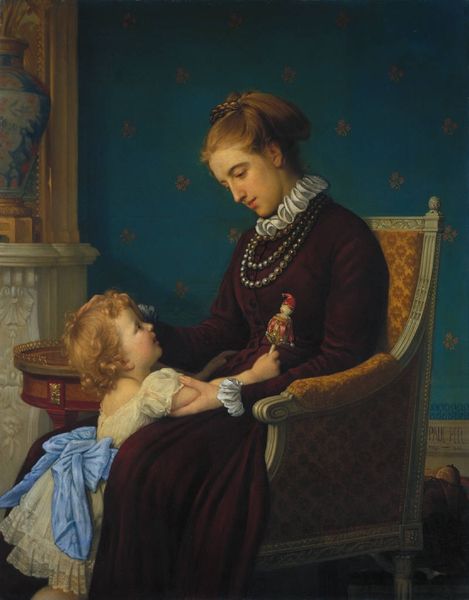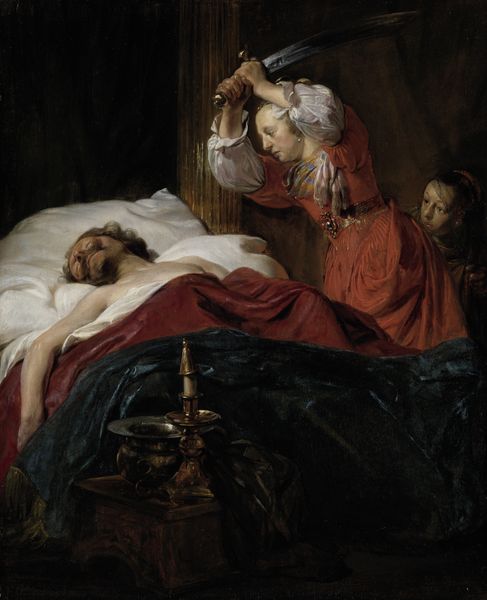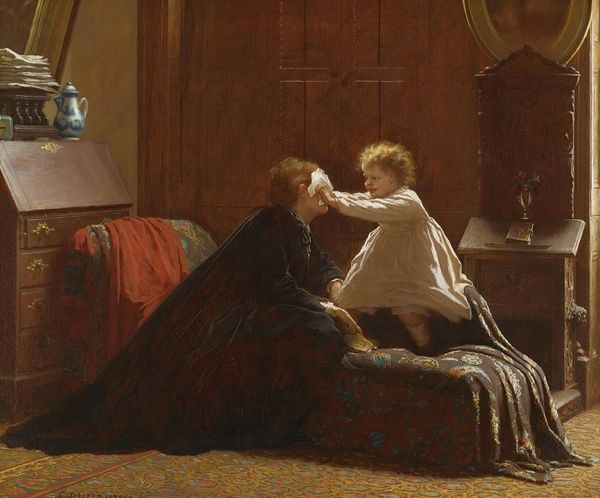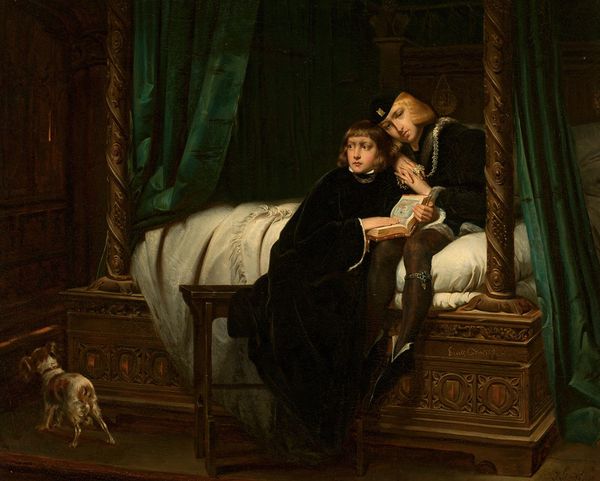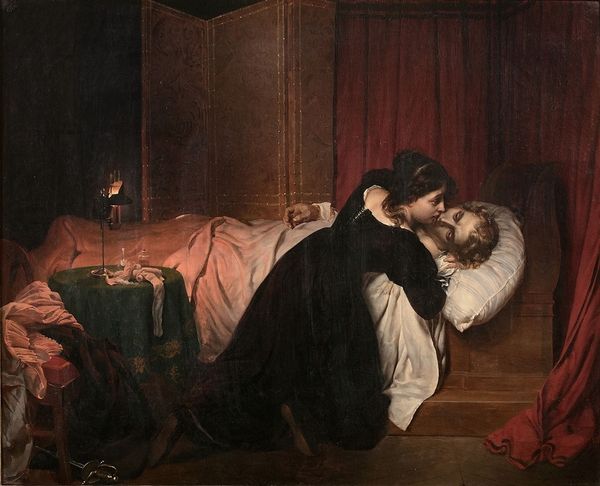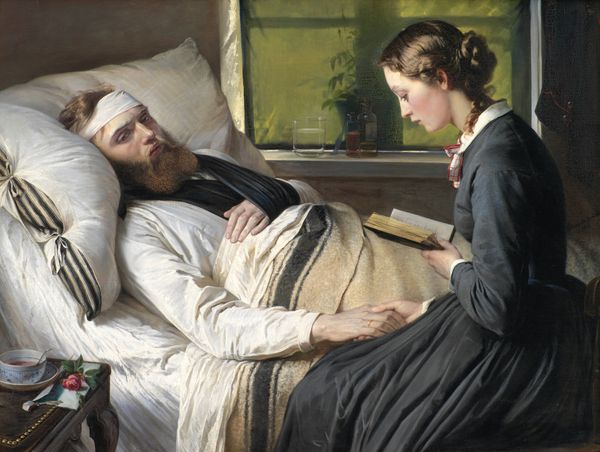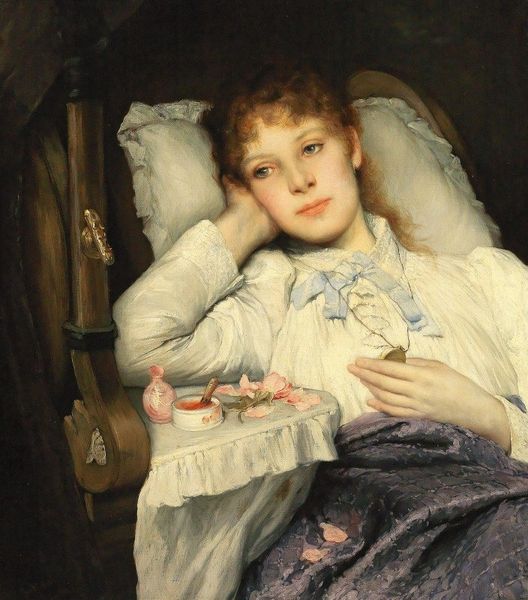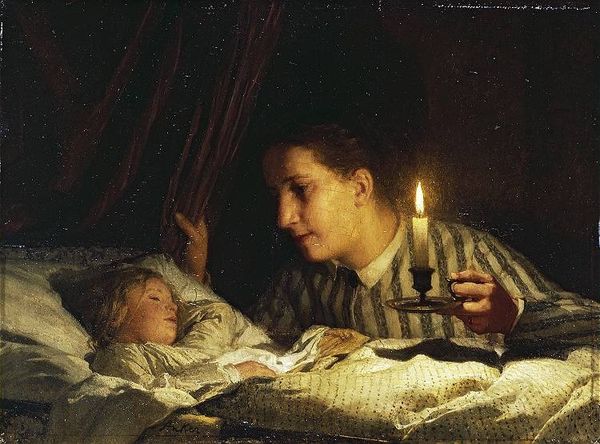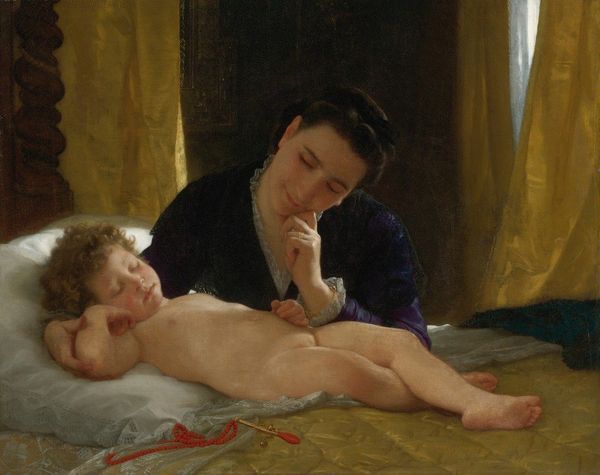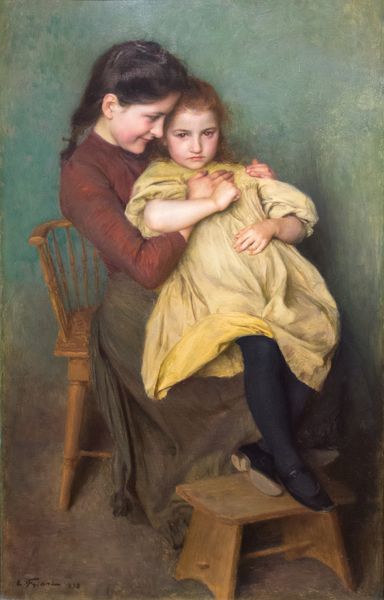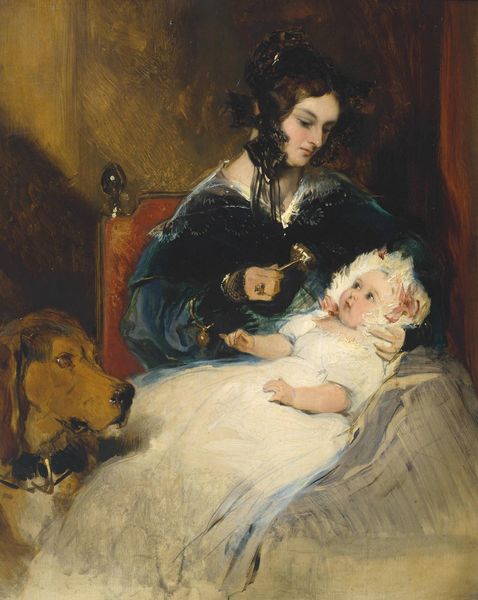
Dimensions: support: 508 x 400 mm frame: 740 x 635 x 140 mm
Copyright: CC-BY-NC-ND 4.0 DEED, Photo: Tate
Curator: This is Joseph Clark's "Mother's Darling," housed here at the Tate. The date of the work is unknown, but Clark lived from 1834 to 1926. Editor: It feels intensely intimate, almost claustrophobic. The focus on the mother and child in bed creates a powerful emotional pull. Curator: Victorian society placed mothers on a pedestal, and this painting visualizes that ideal of nurturing and tenderness. It reflects the era's emphasis on domesticity and sentimentality. Editor: But doesn't that ideal also mask the very real constraints placed upon women? The "darling mother" narrative often ignored the complexities and challenges of motherhood. Curator: Absolutely. While celebrating motherhood, it also confined women to the domestic sphere, limiting their opportunities beyond the home. Editor: This image, while tender, also serves as a social document, illustrating the power dynamics and expectations surrounding women's roles in the Victorian era. Curator: It's a fascinating look at how art can both reflect and reinforce societal norms. Editor: Indeed, making it a powerful piece for understanding the politics of its time.
